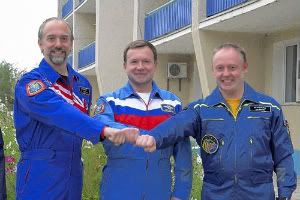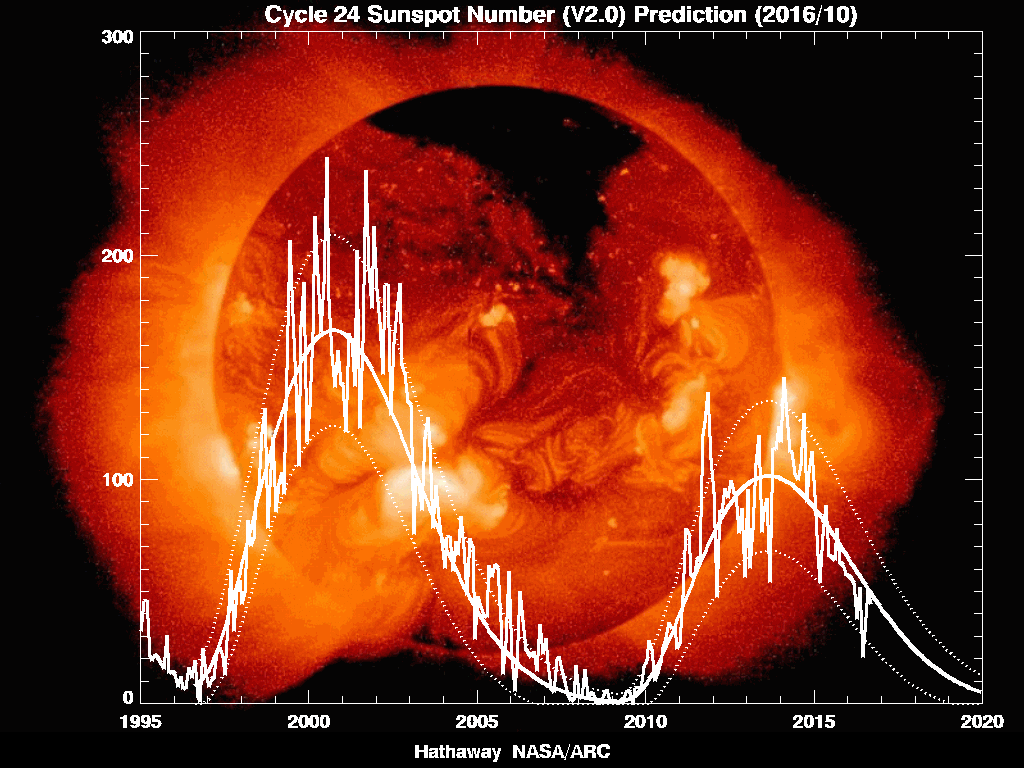Friday, October 31, 2008
Tuesday, October 28, 2008
Monday, October 27, 2008
Saturday, October 25, 2008
Wednesday, October 22, 2008
Tuesday, October 21, 2008
Zone to Zone FOT Propagation
Here is good propagation tool that you can use during the CQWW SSB contest this weekend.
Check it out at http://www.radiosport.ca/zoneprop/
ZoneProp uses a widely accepted propagation engine to determine the band on which a contestant in one CQ DX zone is likely to be able to contact a contestant in another CQ DX zone taking into account the current geomagnetic activity.
Check it out at http://www.radiosport.ca/zoneprop/
Friday, October 17, 2008
Thursday, October 16, 2008
ARISS-SSTV images

This site will be the focal point for some of the best SSTV images received during Oct 2008 and beyond. Images will be downlinked by ISS on 145.800 MHz. To submit a received image for possible inclusion in this gallery, go to the following website to upload your image.
In addition to SSTV images, notes on planned events for the period of Oct 14-23 and reports of planned amateur radio activity will be provided.
More at http://www.ariss-sstv.blogspot.com/
Wednesday, October 15, 2008
W5YI: W5KWQ arrives at space station

Oct. 14, 2008 - A Russian Soyuz spacecraft carrying three space travelers including Austin amateur radio operator/game developer Richard Garriott, W5KWQ, successfully docked with the international space station early today.
The linkup also delivered NASA astronaut Mike Fincke and Russian cosmonaut Yuri Lonchakov, who will take over as the Expedition 18 commander and flight engineer for the next six months. Fincke, 41, is making his second long-duration flight on the station. He is a graduate of Massachusetts Institute of Technology and holds master's degrees from Stanford University and the University of Houston, Clear Lake.
More at http://www.w5yi.org/ama_news_article.php?id=321
SolderSmoke93.mp3
October 12, 2008Get it at http://www.soldersmoke.com/soldersmoke93.mp3
HB Pi Network Tuna (with mystery)
Hamfest report from Belgium
Space Hackers removed from YouTube
Verdict on Judica Cordiglia brothers
FB Italian ham magazines
I shift to FSK on 30 meters
Gimmick capacitors
QRSS QSY woes
SolderJoke
MAILBOX:
Jerry NR5A Back in action
Scott KD5NJR on Space Hacker controversy
Steve WB6TNL on the different flavors of solder smoke!
Paul WA1MAC labled PC boards with SSDRA page numbers
Ramakrishnan VU3RDD getting back on the air
Jim K9JM had 60 POUNDS of 2N2222
Jim AL7R listening from Yuma
Wes W7ZOI on plumbing washer toroids
Paul WA5WCP on laser safety
Terry G4GHU also went to KSC on honeymoon
-
Tuesday, October 14, 2008
Getting started on amateur radio satellites
WHY SATELLITES? As a class-B licensee under the old rules, I did not have any HF privileges at all. Satellites offered a technical challenge and the possibility to work some serious DX using 2m and 70cm. My first trans-Atlantic contact was achieved on the now-defunct RS-10 using 10W to a small Yagi for the uplink, and a sloping dipole to receive the RS-10 downlink signal in the 10m band. It took several months to achieve this first trans-Atlantic QSO as I needed to build up my operating skills and make improvements to my receive set up. To minimise noise pickup from the house, the antenna went at the bottom of the garden and a homebrew RF pre-amp overcame the cable loss and boosted the signal. It was a great sense of achievement to send and receive signals to and from space and to make that contact via an orbiting satellite. I still get a buzz from communication via a spacecraft.
More at http://www.uk.amsat.org/images/PDF/Satellites_RadCom_mar07.pdf
Sunday, October 12, 2008
W5YI: U.S. ham operator launches to Space Station

Fulfilling a childhood dream, legendary video game developer and third generation ham operator Richard Garriott, W5KWQ, of Austin, Texas, blasted off into space aboard a Russian rocket early Sunday morning. He becomes the first American to follow his astronaut father, Owen Garriott, W5LFL, into space.
The Russian Soyuz TMA-13 spacecraft lifted off in perfect weather from the Baikonur Cosmodrome in Kazakhstan (a landlocked country in southern Europe) just after 2 a.m. Central time. Space officials said the Soyuz rocket reached orbit ten minutes later and will dock with the International Space Station (ISS) on Tuesday.
More at http://www.w5yi.org/ama_news_article.php?id=320
Southgate ARC: A 'new-cycle' sunspot emerges
A 'new-cycle' sunspot belonging to Solar Cycle 24 is emerging near the sun's northeastern limb.
This is the third time in as many weeks that a new-cycle sunspot has interrupted the year's remarkable run of blank suns.
The accelerating pace of new-cycle sunspot production is an encouraging sign that, while solar activity remains very low, the sunspot cycle is unfolding more or less normally. We are not stuck in a permanent solar minimum.
Readers with solar telescopes should train them on the sun this weekend to observe sunspot genesis in action.
Visit http://spaceweather.com for updates
This is the third time in as many weeks that a new-cycle sunspot has interrupted the year's remarkable run of blank suns.
The accelerating pace of new-cycle sunspot production is an encouraging sign that, while solar activity remains very low, the sunspot cycle is unfolding more or less normally. We are not stuck in a permanent solar minimum.
Readers with solar telescopes should train them on the sun this weekend to observe sunspot genesis in action.
Visit http://spaceweather.com for updates
Friday, October 10, 2008
KB6NU: Find EchoLink, IRLP Nodes
For those that wish to find a live on the air repeater or simplex node for either Echolink or IRLP.
* Echolink Node Locator
* IRLP Node Locator
Tuesday, October 7, 2008
Kiwi morse tutor program
Learning The Morse Code
There are three words that help you to learn morse code:
PRACTISE, PRACTISE, PRACTISE To help you get the practise, here is Gary Bold's free teaching software for learning morse (PC only, Windows 95/98 and above systems).
It can be downloaded here 550 kilobytes (kB)- (Last updated: 04/02/2008)Its just like learning to ride a bicycle. It’s far better to learn the Morse symbols by sound, and not sight! It is not a good idea to memorise a written table. Get an experienced Morse operator to send characters to you with an audio oscillator, saying each symbol after it’s sent. You want to recognise the symbols by their sound. Tapes are available which will teach you to recognise the symbols by their sound.
The ideal method to learn Morse is by use of a computer. Morse code training programmes are available –– see below for one of them.
Learn them at the same time–if learned later, they take a long while to become as familiar as the symbols. Learn each symbol at a speed of about 12 – 14 WPM, with long gaps between symbols. The gaps will close as you advance. When you have learned the symbols you can practice from a tape at varying speeds or at dub Morse classes.
Friday, October 3, 2008
Simplex Preservation Society
From Amateur Radio Newsline:
The Simplex Preservation Society is a club in the United States that is an alternative to what it calls the traditional repeater-centric amateur radio groups. It's not suggesting anyone gives up repeater use, but its members do monitor simplex, make regular contacts that way and maintain a capability to be able to operate independently of repeaters. SPS members maintain, or improve, their VHF stations to ensure they can effectively communicate within their city limits.Hmmm? Aren't we doing this on 146.460 MHz? Learn more at http://www.73sps.com/about/simplex-utilization.html
Thursday, October 2, 2008
Spotless Sun: Blankest Year of the Space Age
Sept. 30, 2008: Astronomers who count sunspots have announced that 2008 is now the "blankest year" of the Space Age.
As of Sept. 27, 2008, the sun had been blank, i.e., had no visible sunspots, on 200 days of the year. To find a year with more blank suns, you have to go back to 1954, three years before the launch of Sputnik, when the sun was blank 241 times.
"Sunspot counts are at a 50-year low," says solar physicist David Hathaway of the NASA Marshall Space Flight Center. "We're experiencing a deep minimum of the solar cycle."
More at http://science.nasa.gov/headlines/y2008/30sep_blankyear.htm?list1066509
Solar Cycle Prediction (Updated 2008/09/02)

Predicting the behavior of a sunspot cycle is fairly reliable once the cycle is well underway (about 3 years after the minimum in sunspot number occurs [see Hathaway, Wilson, and Reichmann Solar Physics; 151, 177 (1994)]). Prior to that time the predictions are less reliable but nonetheless equally as important. Planning for satellite orbits and space missions often require knowledge of solar activity levels years in advance.
A number of techniques are used to predict the amplitude of a cycle during the time near and before sunspot minimum. Relationships have been found between the size of the next cycle maximum and the length of the previous cycle, the level of activity at sunspot minimum, and the size of the previous cycle.
More at http://solarscience.msfc.nasa.gov/predict.shtml
Wednesday, October 1, 2008
Rufz - "Listening to Callsigns"
"Rufz" is the abbreviation of the German word "Rufzeichen-Hören", which means "Listening to Callsigns". RufzXP is an excellent training software for improving code speed and CW practice, particularly (ultra) high speed memory copying of true amateur radio calls. Focussing on improvement of CW proficiency, it is no contest simulator and does not provide for QRM. It provides additional tools for keeping track of training progress and comparing with other operators via International RufzXP Toplist
More at http://www.rufzxp.net/
Subscribe to:
Posts (Atom)








